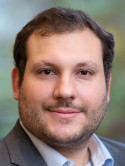Comparative analysis of auger electron emission libraries and Monte Carlo track structure codes for DNA-targeted auger electron therapy Journal Article
| Authors: | França Velo, A.; Carter, L.; Bellamy, M.; Zeglis, B. M.; Humm, J. L. |
| Article Title: | Comparative analysis of auger electron emission libraries and Monte Carlo track structure codes for DNA-targeted auger electron therapy |
| Abstract: | Background: Over the past decade, theranostic radiopharmaceuticals have gained significant attention, driven by the clinical success of agents like [177Lu]Lu-DOTATATE and [177Lu]Lu-PSMA-617. This has spurred an interest in radionuclides that could produce an even more focal radiotoxicity. Radionuclides that decay by electron capture and /or internal conversion result in a cascade of low-energy Auger electrons that produce a dense cluster of ionizations local to the decay site. These radionuclides are especially potent when the decay occurs near or at the DNA. Among these, 123I stands out for its clinical potential as a theranostic isotope. Purpose: This study aims to evaluate and compare two well-recognized data libraries to obtain the Auger electron energy spectra and three Monte Carlo (MC) track codes to analyze DNA-scale energy deposition from Auger electrons emitted by 123I. By examining variability in simulation outputs, this study seeks to determine whether the data libraries yield different DNA double strand break (dsb) outcomes and to assess the sensitivity of the MC track codes. Methods: An in-house MC code was developed in MATLAB to obtain Auger electron energy spectra using the McGuire and Evaluated Atomic Data Library (EADL) datasets. A MC study using Geant4 utilized these spectra to analyze DNA dsb yields, applying a 17.5 eV threshold to define strand breaks. Subsequently, a sensitivity analysis compared energy deposition and dsb yields across MC track codes — Geant4, PHITS, and MCNP6.2 — assessing their effectiveness in modeling DNA damage from Auger emitters and bench-marking these findings against literature data using Moca7B. Results: The study found that the average dsb yields for the 123I atom were similar using both McGuire and EADL libraries. Emission spectra indicated that while the McGuire library produced an average of 11.91 electrons per decay, the EADL library resulted in 13.96 electrons per decay. For different track codes, dsb yields were 0.91 for MCNP6.2, 0.60 for Geant4, and 0.43 for PHITS, whereas the dsb yield in the literature is 0.73. These discrepancies clearly emphasize the need for specific energy thresholds to align with the track code in use. Conclusions: The EADL library produces more electrons than McGuire, but this does not affect the amount of local DNA damage significantly, as most of the additional electrons fall below the 17.5 eV damage threshold. Both libraries yield similar DNA damage outcomes. In addition, our analysis highlights the need for specific energy thresholds in MC codes to ensure accurate DNA damage predictions in Auger electron studies. © 2025 American Association of Physicists in Medicine. |
| Keywords: | genetics; comparative study; sensitivity analysis; dna damage; radiation response; dna strand breakage; dna; dna breaks, double-stranded; benchmarking; double stranded dna break; photons; drug therapy; stochastic model; electrons; monte carlo method; electron; theranostics; auger electron spectroscopy; dna damages; monte carlo simulation; conformal mapping; article; interface states; matlab; theranostic; auger electron; energy gap; atomic emission spectroscopy; auger electron therapy; monte carlo's simulation; spectra's; stochastics; photodissociation; auger stochastic spectrum; augers; dip coating; electron energy analyzers; electron energy loss spectroscopy; enameling; hadrons; hard facing; scale (deposits); atomic data; data library |
| Journal Title: | Medical Physics |
| Volume: | 52 |
| Issue: | 6 |
| ISSN: | 0094-2405 |
| Publisher: | American Association of Physicists in Medicine |
| Date Published: | 2025-06-01 |
| Start Page: | 4871 |
| End Page: | 4882 |
| Language: | English |
| DOI: | 10.1002/mp.17766 |
| PUBMED: | 40133769 |
| PROVIDER: | scopus |
| DOI/URL: | |
| Notes: | The MSK Cancer Center Support Grant (P30 CA008748) is acknowledged in the PubMed record and PDF. Corresponding MSK author is John L. Humm -- Source: Scopus |
Altmetric
Citation Impact
BMJ Impact Analytics
MSK Authors
Related MSK Work






